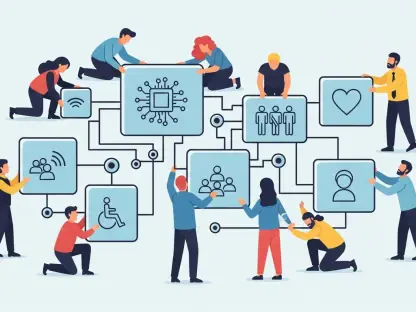In the ever-evolving landscape of healthcare, artificial intelligence (AI) has emerged as a transformative force, particularly in clinical documentation integrity (CDI) and medical coding, where precision and efficiency are paramount to ensuring accurate patient records and reimbursement. While AI, especially through technologies like Natural Language Processing (NLP), has been integrated into documentation workflows for over two decades, recent advancements have dramatically expanded its capabilities. Tools such as conversational interfaces powered by Generative Pretrained Transformers (GPTs), automated query suggestion engines, and real-time coding assistants are reshaping how professionals approach their tasks. However, despite this remarkable progress, AI is not a panacea. It cannot resolve entrenched challenges related to human behavior, organizational policies, or systemic processes that have long plagued the industry. This article explores the areas where AI can significantly enhance CDI and coding, while also addressing the limitations that require human intervention and strategic oversight.
1. AI’s Impact on Document Analysis and Query Generation
AI’s evolution in document analysis, particularly through advanced NLP, has brought substantial improvements to CDI and coding by enabling clinical concept extraction with unprecedented accuracy. Modern NLP systems can identify missing or implied diagnoses in medical records, flagging discrepancies that might otherwise be overlooked. For instance, these tools can detect subtle references to conditions that lack explicit documentation, providing a foundation for more complete records. However, human oversight remains essential, as AI may misinterpret context or clinical nuance. Without a trained professional to validate suggestions, there’s a risk of incorrect assumptions being integrated into the final documentation, potentially impacting patient care or reimbursement.
Beyond document parsing, AI is streamlining the creation of clinical queries with remarkable speed and compliance. Newer models can draft well-structured query suggestions, reducing the time CDI professionals spend on repetitive tasks and allowing focus on higher-value activities. Yet, the decision to send, modify, or withhold a query must rest with the human specialist. AI lacks the judgment to assess the appropriateness of tone or the clinical necessity of a query, underscoring the need for professionals to maintain control over this critical communication process with providers.
2. Training and Cross-Referencing with AI Tools
AI-driven tools, particularly those leveraging GPT technology, are revolutionizing training for coders and new CDI staff by offering safe, simulated learning environments. These platforms allow practice through realistic scenarios without exposing personal health information (PHI), ensuring compliance with privacy regulations. Trainees can engage in just-in-time learning, honing skills like query formulation or code assignment in a risk-free setting. This approach not only accelerates skill acquisition but also builds confidence in handling complex cases, preparing staff for real-world challenges without the ethical or legal concerns of using actual patient data.
Additionally, AI excels in cross-referencing codes and guidelines, pulling logic from diverse sources such as ICD-10, CPT, HCC, and Coding Clinics. It can even explain coding pathways, offering clarity on how specific codes align with documentation. Despite this capability, the coder’s clinical understanding and logical reasoning remain indispensable. AI may present accurate data, but it cannot replicate the nuanced decision-making required to ensure codes reflect the true clinical picture. Human expertise must guide the application of AI suggestions to avoid errors that could affect billing accuracy or audit outcomes.
3. Accelerating Reviews and Evolving Professional Roles
AI is proving invaluable in speeding up clinical reviews by highlighting common documentation gaps, such as missing details on laterality, specificity, or causality. This functionality allows CDI specialists and coders to focus on areas needing attention, enhancing efficiency in workflows that are often time-intensive. However, AI struggles to explain why these gaps are clinically significant or how they impact the broader context of patient care. Human expertise is critical to interpret the relevance of identified issues, ensuring that documentation not only meets coding standards but also supports accurate clinical narratives for treatment and reporting purposes.
As AI continues to integrate into healthcare, the roles of coders and CDI professionals are shifting toward more analytical and strategic functions. Less time is spent on manual lookups or repetitive tasks, with greater emphasis on education, interpretation, and decision-making. Adapting to this change requires comfort with AI collaboration, including skills in prompt engineering and critical evaluation of outputs. While deep technical knowledge isn’t necessary, developing adaptive thinking, clinical insight, and digital confidence is becoming essential for professionals to thrive in this evolving landscape and contribute meaningfully to documentation integrity.
4. Persistent Challenges Beyond AI’s Reach
Despite AI’s advancements, certain challenges in CDI and coding remain outside its scope, starting with poor documentation culture among clinicians. If providers lack training or motivation to document clearly and thoroughly, AI cannot rectify the resulting deficiencies. Tools may flag issues, but they cannot instill the discipline or understanding needed for consistent, high-quality records. Addressing this requires human-led initiatives focused on education and communication to foster a culture where documentation is prioritized as a cornerstone of patient care and accurate coding.
Another hurdle AI cannot overcome is inconsistent or non-compliant query practices within teams. While algorithms can suggest queries, variations in tone, format, or escalation processes among staff can perpetuate discrepancies and heighten compliance risks. AI lacks the ability to align team behaviors or enforce standardized approaches, meaning organizations must invest in clear guidelines and training to ensure queries meet regulatory and ethical standards. Without such human-driven alignment, the benefits of AI-generated suggestions may be undermined by operational inconsistencies.
5. Knowledge Gaps and Cultural Barriers AI Can’t Fix
Foundational coding knowledge gaps present another barrier that AI cannot address. A solid understanding of anatomy, physiology, sequencing rules, and coding conventions is irreplaceable, and reliance on AI without this expertise can be perilous. Tools may offer suggestions, but if professionals lack the background to critically assess them, errors in code assignment or documentation could occur, leading to financial or clinical repercussions. Continuous education and mentorship remain vital to equip staff with the skills needed to use AI as a supportive tool rather than a crutch.
Cultural issues, such as fear-based leadership, also fall outside AI’s capabilities to resolve. Teams hesitant to speak up, ask questions, or embrace new technologies due to restrictive or intimidating environments cannot be fixed by algorithms. Cultural transformation depends on human effort to build trust, encourage dialogue, and foster innovation. Similarly, the temptation to overuse AI for shortcuts without strategic planning risks quality, compliance, and audit issues. Establishing clear policies to balance efficiency with accuracy is a human responsibility that ensures AI integration enhances rather than jeopardizes outcomes.
6. Strategic Steps for Teams to Leverage AI Effectively
To maximize AI’s potential in CDI and coding, teams must first acknowledge its historical context, recognizing that it is not a sudden innovation but an evolving tool built on decades of development. Positioning new AI solutions as a natural progression rather than a disruptive overhaul helps staff adapt with less resistance. This perspective encourages gradual integration, allowing professionals to see AI as a partner that builds on existing practices while addressing modern demands for efficiency and precision in healthcare documentation.
Further, investing in AI literacy and prompt practice is crucial, without waiting for formal training programs. Internal experiments using non-PHI queries and documentation drills can build familiarity and confidence in leveraging these tools. Teams should also prioritize integration over substitution, ensuring AI supports clinical reasoning rather than replacing it. Updating query policies to include human oversight and compliance checkpoints is essential when AI assists in drafting suggestions. Finally, promoting a mindset of confidence rather than anxiety helps veteran coders and CDI specialists value their judgment as indispensable, even amidst growing automation.
7. Building AI Fluency Through Safe Home Practice
Developing AI fluency doesn’t require access to patient records or proprietary systems, as fictional, clinically accurate scenarios can be used in tools like ChatGPT for practice. Consider a scenario involving a 78-year-old woman with shortness of breath, fever, and a productive cough, diagnosed with right lower lobe pneumonia. She has chronic systolic heart failure (EF 35%) and stage 3 chronic kidney disease, with the provider noting “pneumonia with CHF exacerbation” but omitting treatment or volume overload details. Using a prompt like, “Act as a clinical documentation improvement specialist and identify areas needing a provider query, explaining reasoning with CDI best practices and coding guidelines,” allows safe exploration of AI’s capabilities without privacy concerns.
After receiving the AI response, evaluate if it identifies the need for clarification on volume overload or treatment, assesses the appropriateness of suggested query language, and checks for confusion between coexisting conditions and causality. Variations such as omitting the EF percentage, adding oxygen therapy, or including sepsis mentions can test how AI adapts, highlighting where human judgment must override. This low-risk practice builds skills in prompt structure, clinical interpretation, and compliant query development, preparing professionals for real-world application.
8. Reflecting on AI’s Journey and Future Path
Looking back, AI had already become a companion in coding and CDI over two decades ago, though its visibility and power reached new heights in recent years. Its integration into healthcare documentation was a gradual process, marked by steady improvements in tools that assist with parsing records, generating queries, and supporting training. Throughout this journey, the preservation of human strengths like clinical curiosity, ethical integrity, and logical reasoning in documentation stood as a cornerstone, ensuring that technology complemented rather than overshadowed professional expertise.
Moving forward, teams must guide AI thoughtfully to harness its benefits as a strategic ally, focusing on actionable integration that enhances workflows without compromising quality. Staying curious and driving meaningful change became imperative, as did the commitment to balance automation with human oversight. Emphasizing continuous learning and policy updates ensured that AI supported rather than dictated outcomes, paving the way for a future where technology and expertise worked in tandem to elevate healthcare documentation standards.









